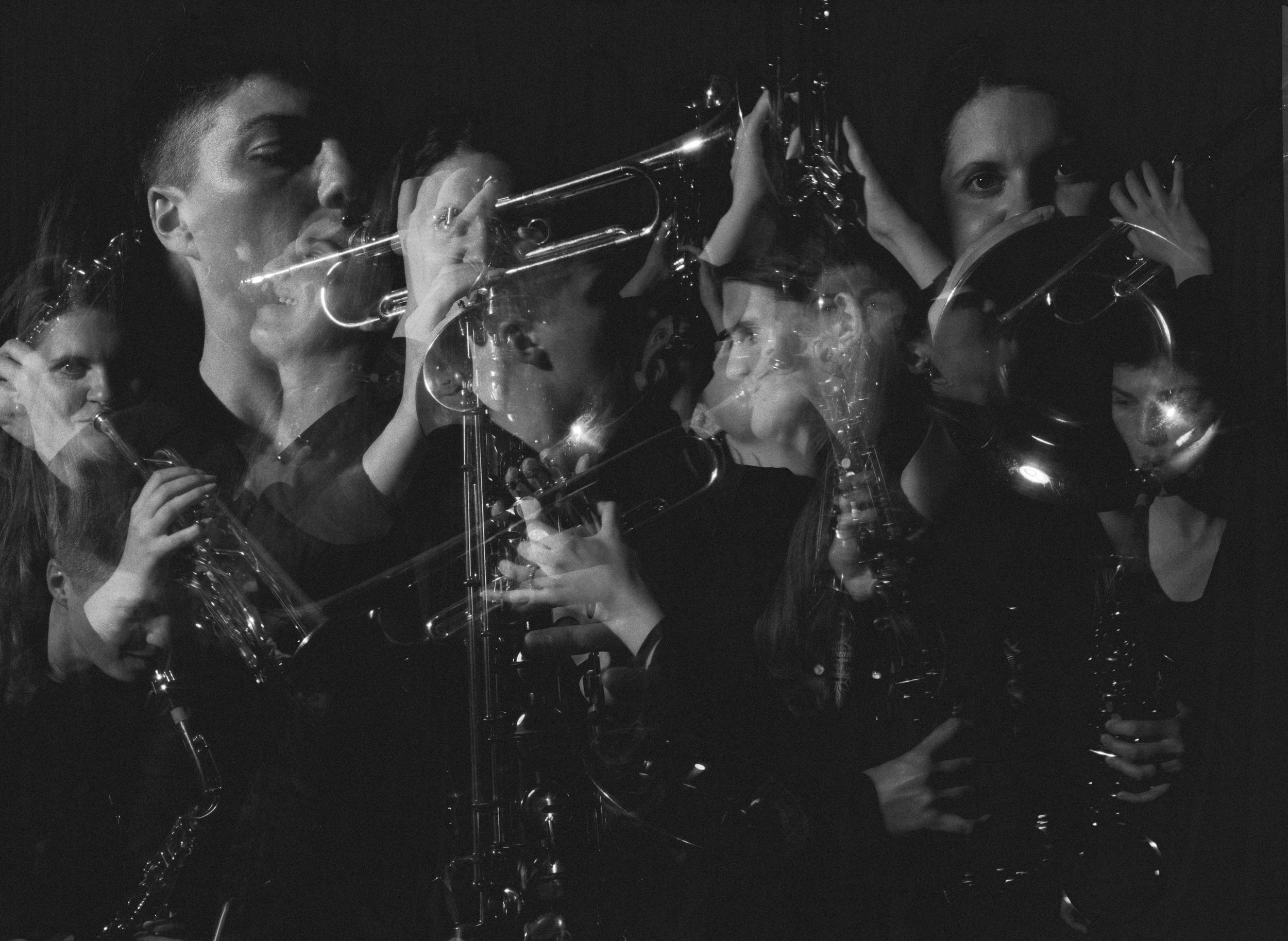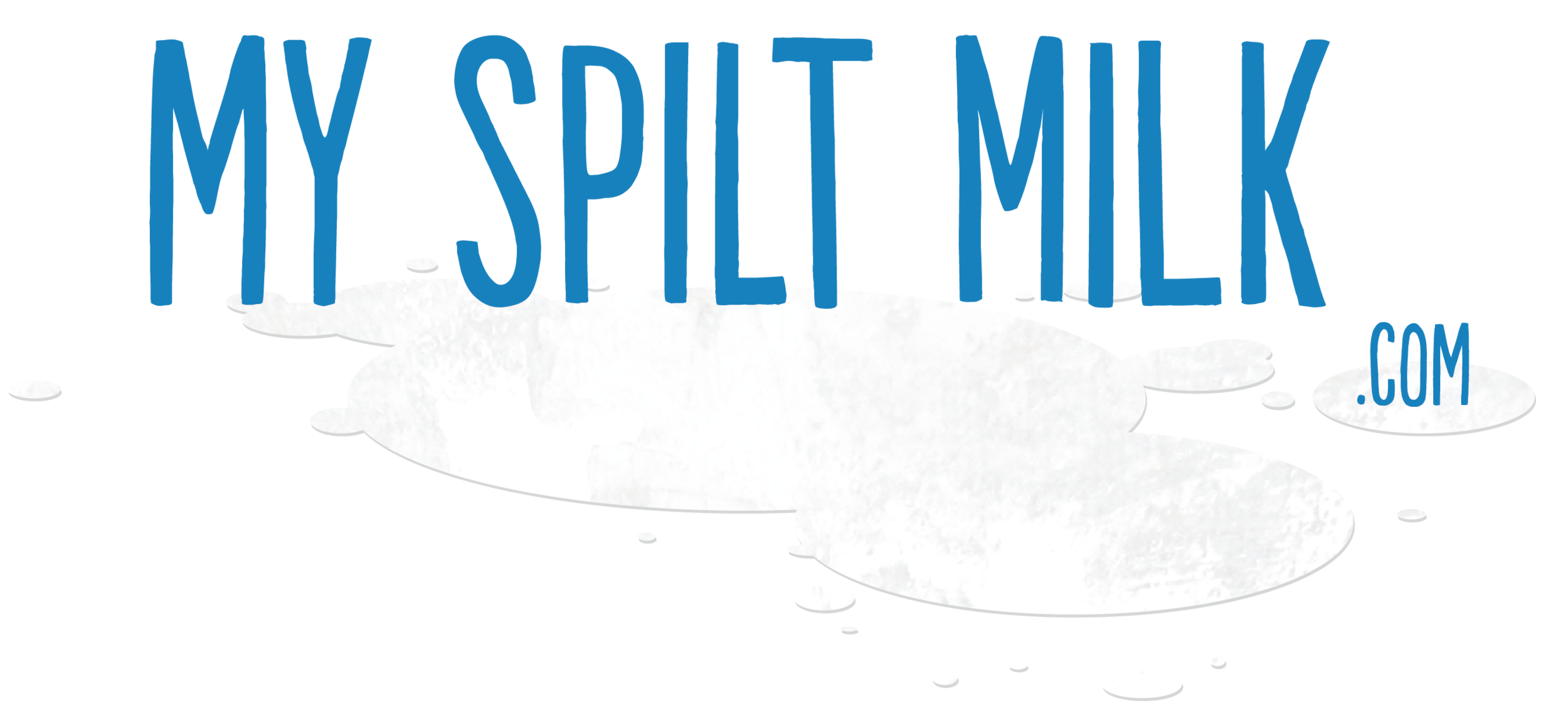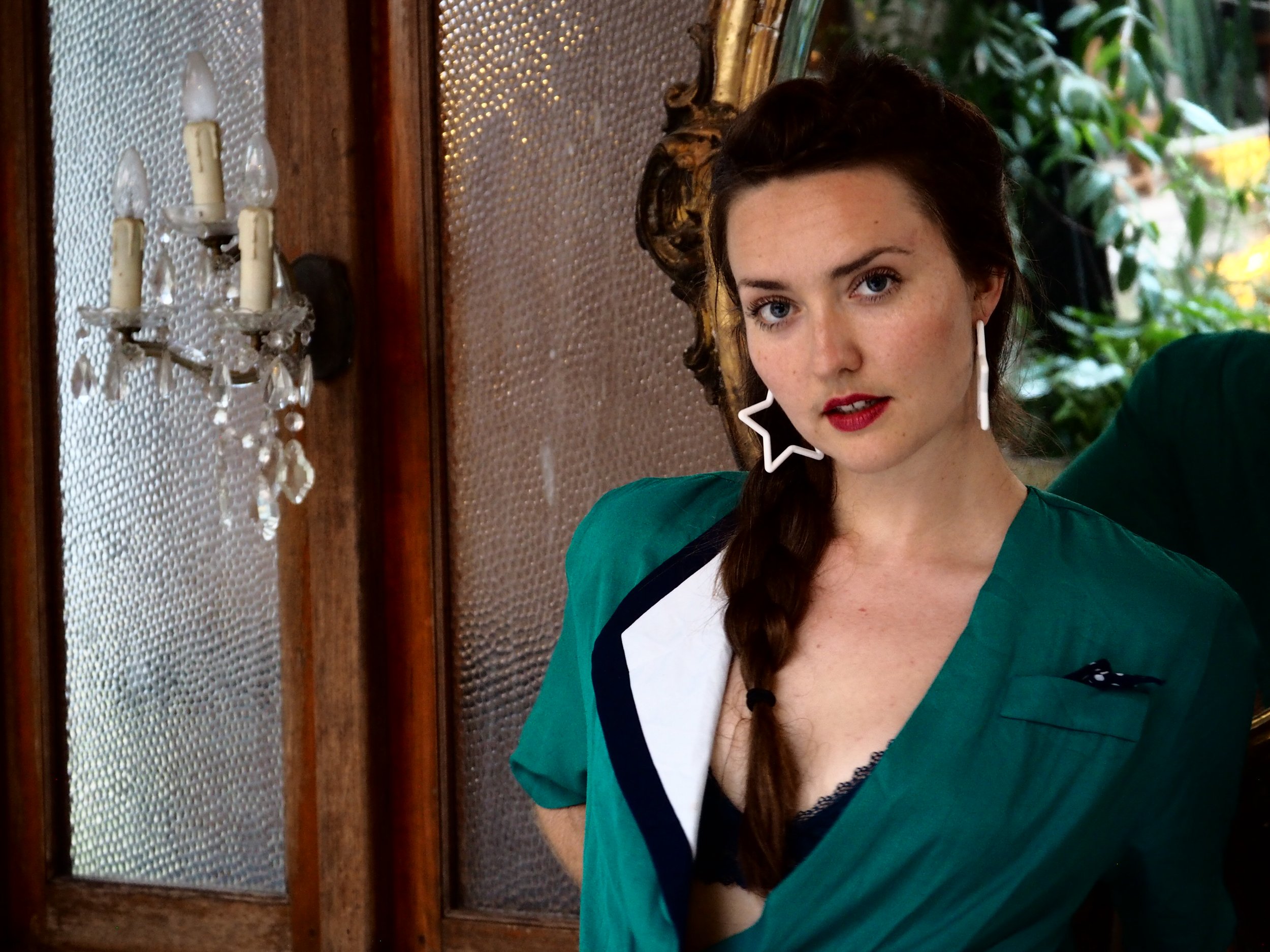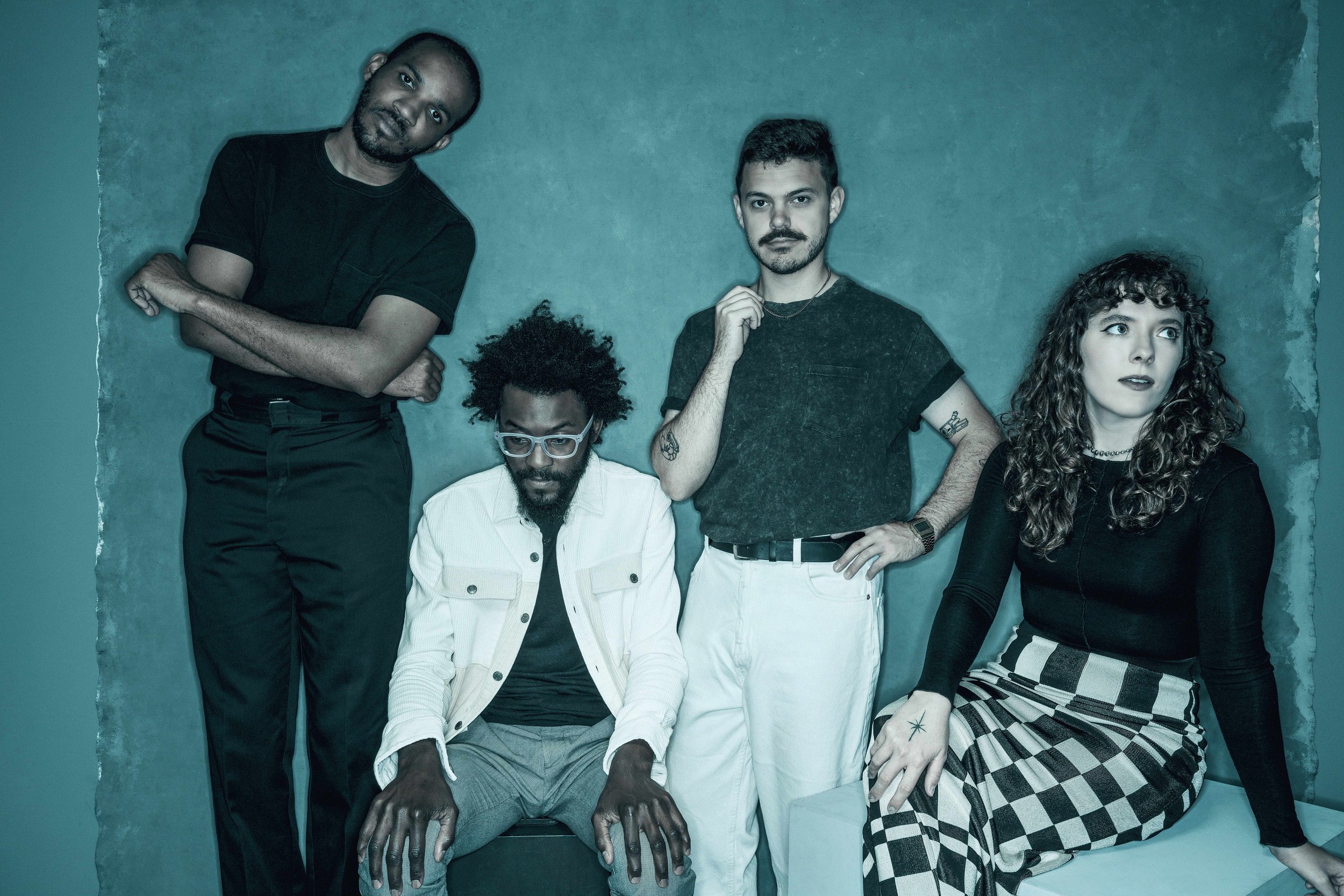"Give Way" Makes Music Two Weeks at a Time

Emily Mikesell and Kate Campbell Strauss’ new EP started as a UNO Jazz Studies project that grew into a less defined space of their own unintentional creation.
Give Way challenges time.
The new EP by Emily Mikesell and Kate Campbell Strauss started as a project in a music class at University of New Orleans during COVID when classes met virtually, and it counters many of the assumptions we make about jazz. We romantically think about jazz as three, four or more musicians coming together in a moment to explore a musical idea. Classically, that moment is rooted in the blues, and ideally the group’s interaction fuels musical discoveries and personal expressions the artists wouldn’t make on their own.
Give Way took the moment out of the equation, but the results are nonetheless pieces that neither would have realized without their collaboration.
“Brian Seeger was our teacher and he had us pair up for duo recording projects,” Mikesell says. The guitarist and Coca-Cola Endowed Chair in American Jazz Studies at UNO gave each duo two weeks to record a song together, and rather than work out some way to play together over Zoom or something like that, Mikesell sent a trumpet track to Campbell Strauss, who added a saxophone part based on what they heard and sent it back. Each listened to the growing piece with the other’s additions and added what they thought it needed. The process remained the same from the first steps with only a handful of horns and a lot of space in the sonic spectrum to fill, to the end when the needed elements were harder to hear.
Each responded to the growing track in a fairly pure way. They didn’t consult with each other or discuss what they thought the track needed. There was no planning in advance, and they barely knew each other before the project started. Mikesell thinks that made the process easier. “We didn’t know what each were like as musicians or know what each other’s sound was, what each other’s influences were,” she says. That meant neither made choices with the other’s preferences and dislikes in mind. They made artistic choices they believed in and committed to them.
Mikesell suggested the rules for the collaboration. “Play what you hear, send it, play what you hear,” Campbell Strauss recalls. There was no premeditation before they started, and neither explained her choice after making it. Neither told the other what she was trying to set up, and neither second guessed the other’s choice.
“It was surprisingly easy and fun,” Campbell Strauss says.
The finished track, “Cloud Castles,”starts simply with Mikesell’s trumpet making the first statement, a measured melody line that might teeter between melancholy and elegy if it teetered at all. After a pause, they explore the melody with additional horns doubling the main line and adding harmonies while a windy baritone sax thrums to add texture and an unexpected pulse. From there, the composition develops as Mikesell and Campbell Strauss assert charming variations on the initial thoughts, play with them, echo them, answer them, then move on, not to some place new but to another examination of the melodic pieces to see how they can be freshened up or turned on their ear. It’s a musical house of mirrors, but it’s more linear than that image might suggest. Halfway through, Mikesell’s shouted tone signals that she’s about to take a solo, but it’s so well integrated into the structure of the song that it’s easy to miss on the first few listens.
“We loved it so much that we wanted to keep making more,” Campbell Strauss says of the final result. They went on to record five more tracks through the same process and horns, and recently released the results as Give Way.
Talking about the process now makes Mikesell laugh. They became good friends while working on Give Way, so much so that she had forgotten how little they knew about each other in the early stages of the process. The feeling that their way of working paid off prompted them to impose the same limitations on their subsequent songs. They gave themselves two weeks to bounce tracks for each piece, but they weren’t so rigid that they cut off a piece that wasn’t quite done at the end of two weeks.
You might think the deadline kept them from fiddling with a piece endlessly, but Mikesell and Campbell Strauss don’t think that was the case. “Every time we finished one, we thought it sounded exactly right,” Mikesell says. She does think the deadline helped because it kept them on task.
“When you’re doing an original project and don’t have any deadlines, some things never happen.”
They did discover the Black Hole of Tinkering in the mixing phase. They did the mixing themselves and it took far longer than the sessions. They loved the pieces but wanted to make sure the sound was exactly right, so much so that they listened to mixes through a variety of speakers and types of headphones to make sure that the music they made came through, whether heard on studio-quality speakers or mediocre ear buds. They finally brought in outside ears after almost a year of off and on mixing to confirm their suspicion that they only needed a few final tweaks to call it done.
Because they composed the songs the way they did, Mikesell and Campbell Strauss’ influences aren’t obvious. Mikesell loves Miles Davis and Chet Baker, while Campbell Strauss’ first saxophone love was Paul Desmond on Dave Brubeck’s Time Out, and Dexter Gordon as they matured as a player. You don’t hear any of those musicians hovering in the background of Give Way. The way Mikesell and Campbell Strauss made the music produced songs that had more clearly composed structures than a head arrangement, a melody, solo passages, then a return to the head. You can just as easily hear echoes of Philip Glass or Steve Reich in the music, even though jazz values and practices shaped the tracks.
“All these songs have a bunch of sections,” Mikesell says, and focusing on them forced her to do things out of her comfort zone. “Normally trumpet plays the melody and a solo, but we were both playing harmony parts.”
Sometimes playing the part she heard as necessary forced her to play notes below her range, and in one case she worked to make her trumpet sound more like the French horn part she heard in her head. They didn’t build the songs with solos in mind, and when Mikesell took one in particular, the idea she imagined was one she would have had a hard time pulling off in a live setting.
But the pieces weren’t designed as vehicles to show off their soloing virtuosity. “There was a lot of textural playing, adding tones and textures,” Campbell Strauss says. The pieces weren’t exercises in perfection either. They were recording parts and could record another take if something went wrong, but there are imperfections all over the EP. If a take had the feeling they wanted, they went with it instead of a more technically accurate take that lacked the life they wanted.
Kate Campbell Strauss and Emily Mikesell
They’re aware that because of the way the music was made, Give Way doesn’t sit naturally in any genre. It’s not something they thought about while making the EP, but “jazz is about performance,” Campbell Strauss says. Even though they performed each part, they haven’t played it as an ensemble and have no plans to play the pieces live. They’ve thought about it and considered some possible ways to perform Give Way including the two of them playing live with the rest of the horns prerecorded. Since Mikesell wrote charts for Trumpet Mafia’s Jazz Fest shows the last few years, they’ve considered hiring the 20 or so trumpet and saxophone players needed to play it in concert. That requires funding though, something they don’t have enough of to stage a performance of Give Way right now.
“I’m pretty comfortable with it as a recording project/composition project,” Campbell Strauss says. Mikesell agrees but adds, “I’d love to put it on one day.”
At the moment, Mikesell lives in San Diego and is between gigs, which makes a live Give Way harder to imagine. She’s busy playing in an indie rock band and working on an album for trumpet, synths and strings. Campbell Strauss teaches jazz combos at a college in Maine, plays gigs as a side musician, and has an organ trio and an experimental trio with an electronic musician and a sitar.
Since the EP’s release means Give Way is finally in the world, they’re taking their time to think about what comes next. A performance is a maybe and that’s how they feel about a follow-up too. They know they’d handle the post-recording time differently if they do, but they’re proud of the music and loved the process.
Strip the question down to a musical one and the answer is easy. “I’d like to make 100 more albums like this,” Campbell Strauss says.
Creator of My Spilt Milk and its spin-off Christmas music website and podcast, TwelveSongsOfChristmas.com.







